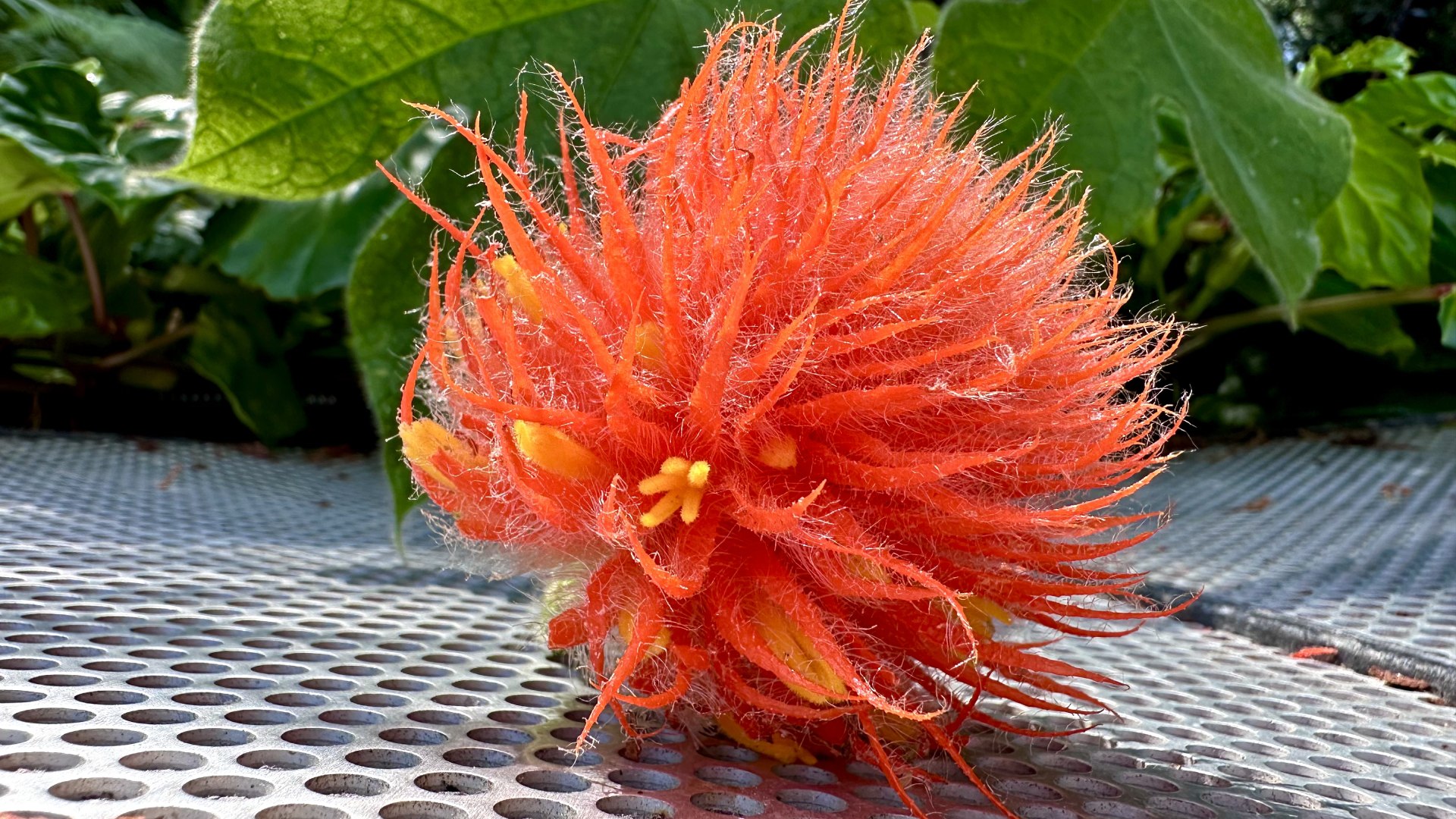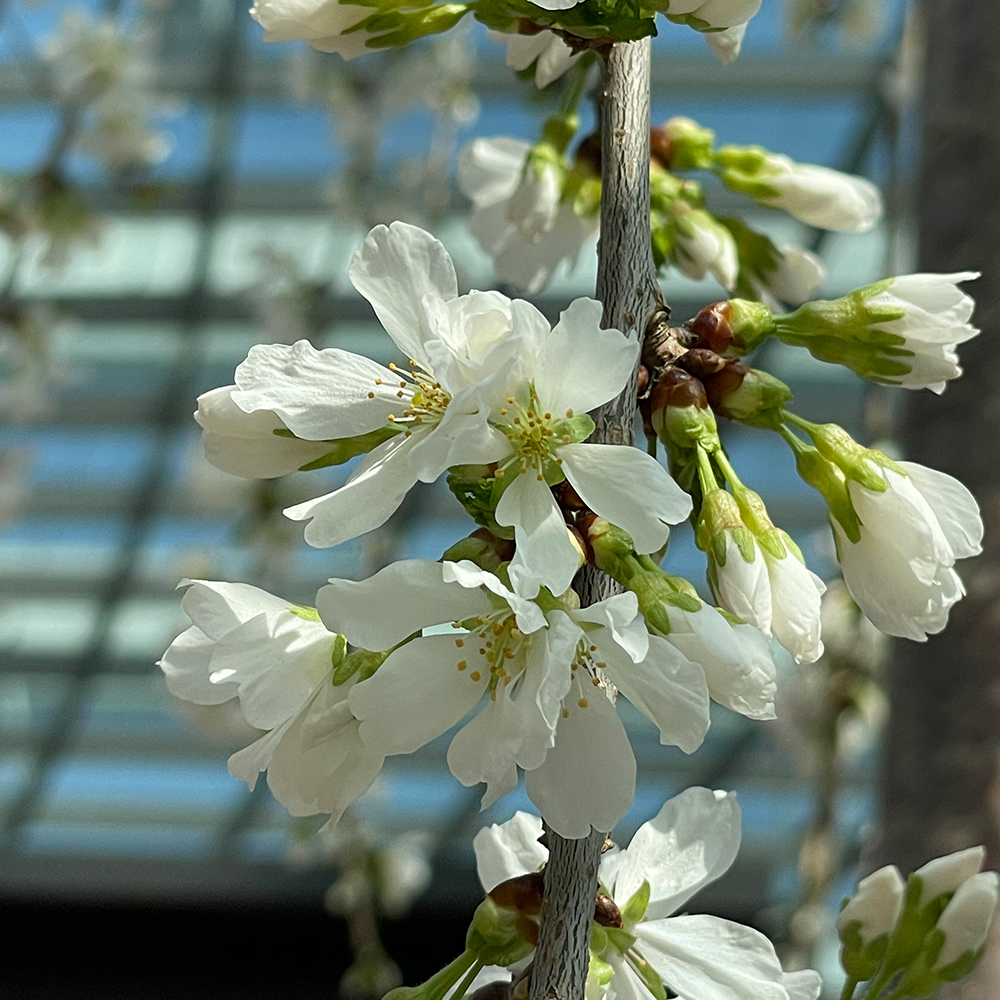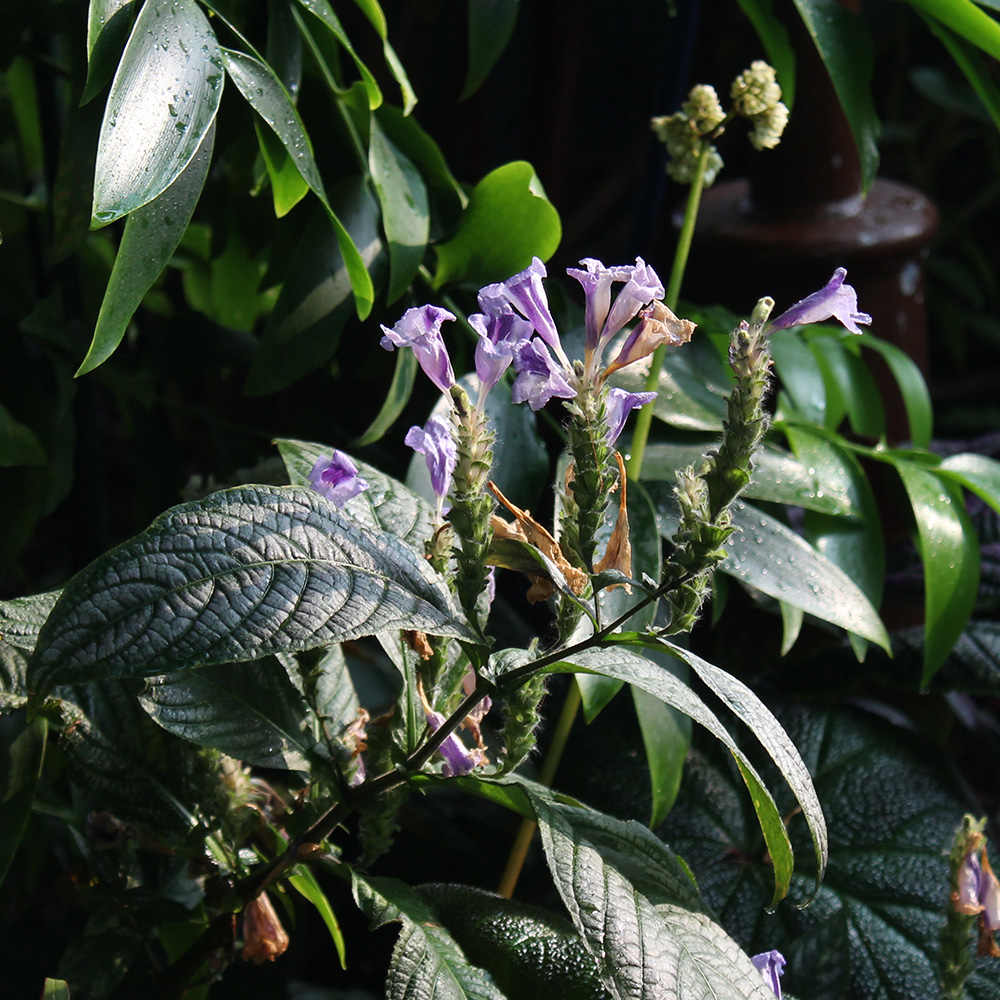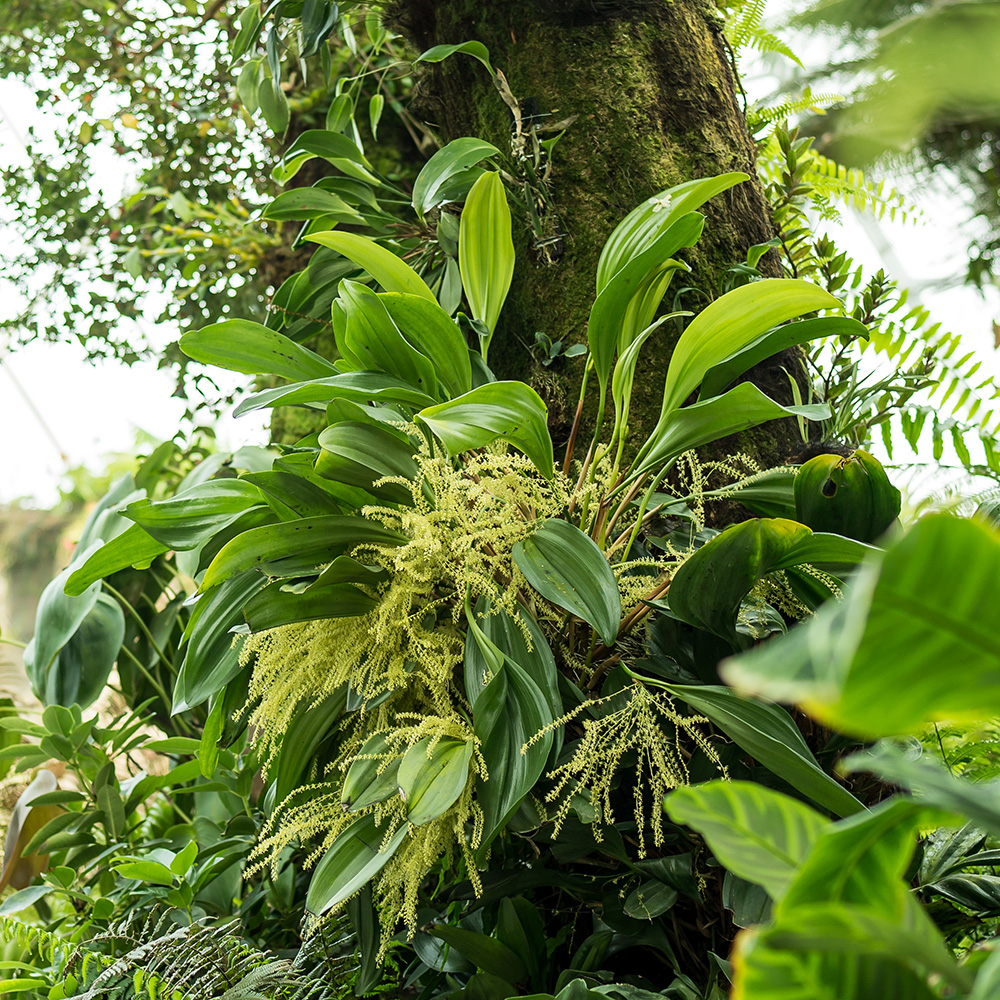Bird of Paradise (Strelitzia reginae)
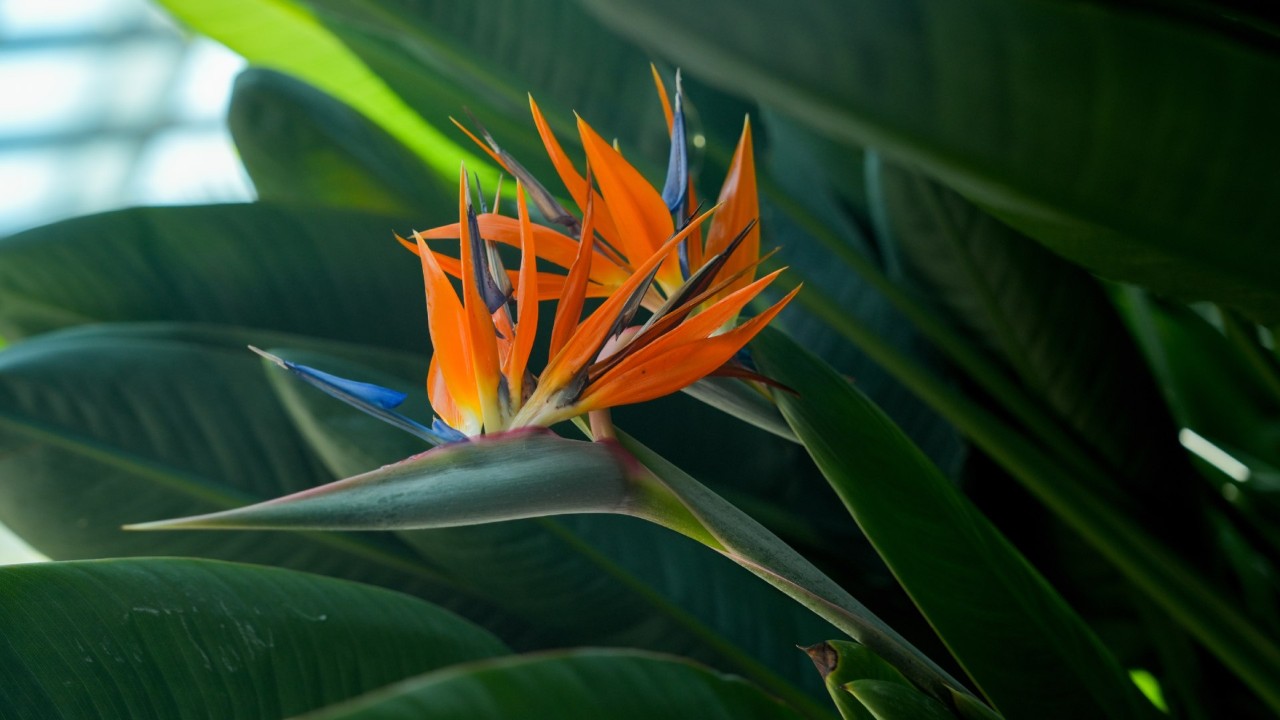
Strelitzia reginae, widely known as the Bird of Paradise, is one of the most iconic flowering plants in the world. Belonging to the Strelitziaceae family and the Zingiberales order, it is native to South Africa and recognized for its striking, bird-like inflorescence. The genus Strelitzia was named in honour of Queen Charlotte of Mecklenburg-Strelitz (wife of King George III), while “reginae” means “queen” in Latin.
There are only five species in the Strelitzia genus, namely:
- Strelitzia reginae – Bird of Paradise (orange and blue flowers)
- Strelitzia nicolai – Giant White Bird of Paradise (white and blue flowers, tree-like form)
- Strelitzia alba – White Bird of Paradise, similar to S. nicolai
- Strelitzia caudata – Mountain Strelitzia, similar to S. nicolai, but shorter and found in higher altitudes
- Strelitzia juncea – Similar in form to S. reginae, but with narrow-leaves and thin, rush-like foliage
The bird of paradise is an evergreen perennial that grows in clumps up to 1.2 to 1.5 meters tall and up to 1.5m wide, arising from underground stems known as rhizomes. The plant features long-stalked, grey-green leathery leaves arranged in a fan-like form. They resemble those of banana plants, a common trait in the Zingiberales order. However, it is the plant’s unique floral morphology that truly defines it.
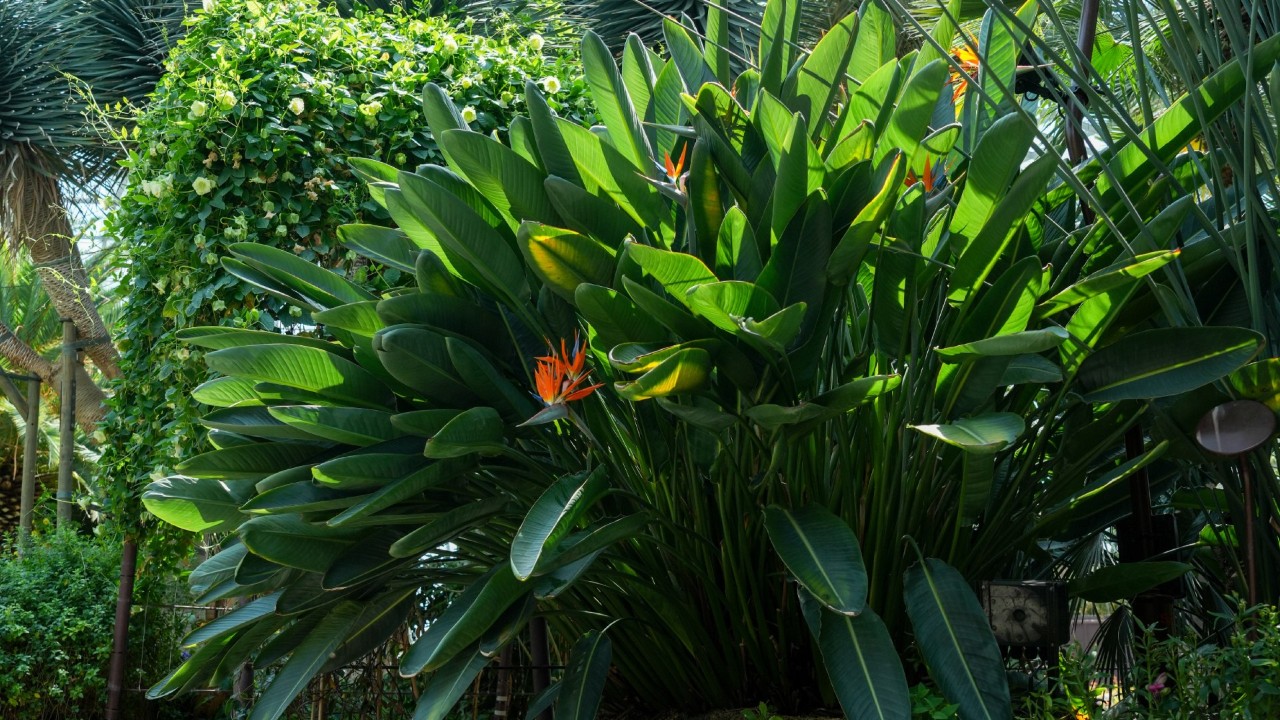 The leaves of the bird of paradise superficially resemble banana leaves in shape. However, bird of paradise leaves grows in clumps directly from an underground rhizome, while banana leaves are produced from individual pseudostems that develop from suckers.
The leaves of the bird of paradise superficially resemble banana leaves in shape. However, bird of paradise leaves grows in clumps directly from an underground rhizome, while banana leaves are produced from individual pseudostems that develop from suckers.
The flowers are borne on and bloom successively from a modified inflorescence in a green and pink spathe shaped like a bird’s beak. The floral structure includes three vivid orange outer sepals and three blue inner petals, two of which are fused to form an arrow-shaped nectar chamber. This arrangement closely resembles the head of a tropical bird, giving rise to its common name.
These blooms are so striking that they are often used in tropical theme floral arrangements together with other unique flowers such as pincushions, sugarbush, ginger flowers, lobster claws, etc.
Flowers bloom intermittently throughout the year, attracting bird pollinators in their native range. In its native region of South Africa, the bird of paradise is pollinated mainly by an endemic bird species, the Cape Weaver (Ploceus capensis). As the bird lands on the perch made up of the blue petals to drink nectar, pollen from other plants is transferred to the white stigma protruding from the tip of the blue petals. Under the weight of the bird, the petals open, exposing the anthers and shedding pollen onto the bird’s feet. Because the bird remains relatively still while feeding, self-pollination is minimised, ensuring effective cross-pollination.
Outside of its native range, however, natural seed production is limited due to the absence of these specific pollinators. Interestingly, in southern California, where bird of paradise is grown as an ornamental flowering plant, the Common Yellowthroat Warbler (Geothlypis trichas) has been observed acting as an efficient pollinator, offering insights into potential adaptation and mutualism in non-native environments.
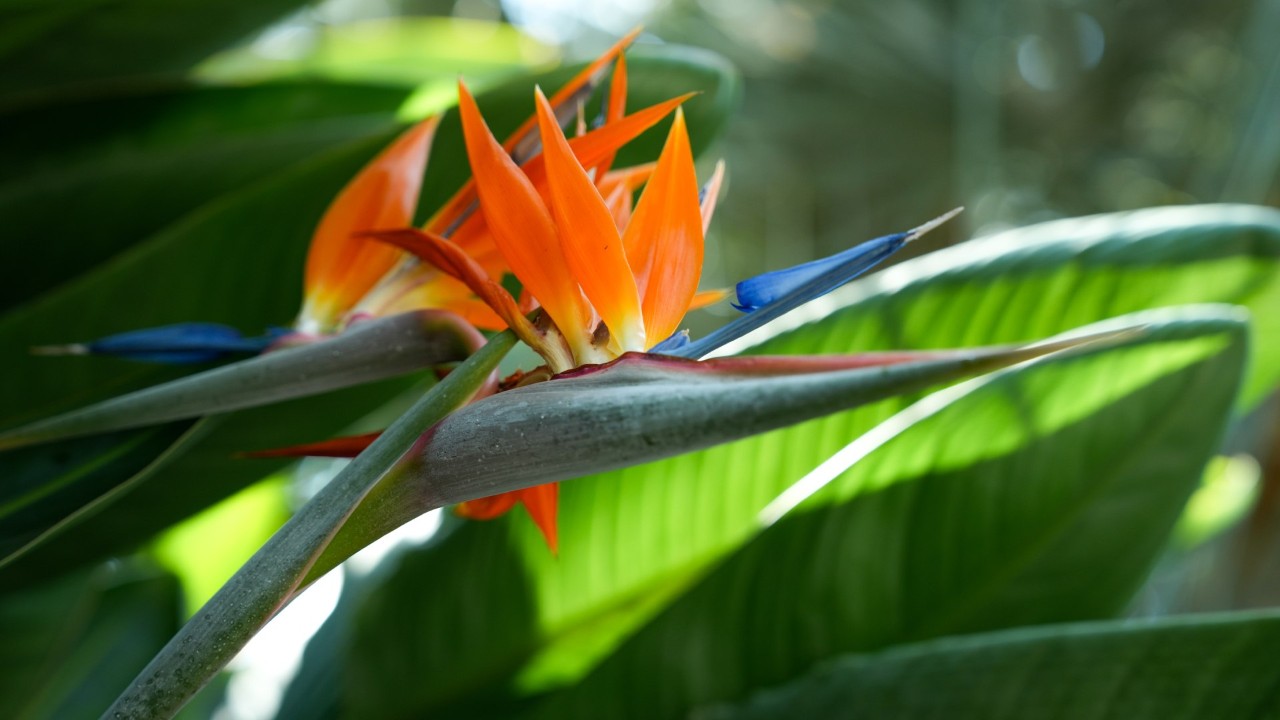 Each flower has three orange sepals and three blue petals. Two of the blue petals are fused into a slender, spike-shaped landing platform covering the stamens and carpel, which provides a landing and perching area for birds to rest while they feed on the nectar. Within a single spathe there are often 2-3 flowers in varying stages of bloom at any given time.
Each flower has three orange sepals and three blue petals. Two of the blue petals are fused into a slender, spike-shaped landing platform covering the stamens and carpel, which provides a landing and perching area for birds to rest while they feed on the nectar. Within a single spathe there are often 2-3 flowers in varying stages of bloom at any given time.
When successfully pollinated, the bird of paradise produces a dry, dehiscent fruit in the form of a leathery, woody capsule. When mature, the capsule splits open to reveal numerous black seeds, each covered with a bright orange aril that likely attracts birds for seed dispersal. However, germination is slow and irregular, often requiring pre-treatment such as soaking and/or scarification to break dormancy. Hence, propagation of the bird of paradise is usually done through division of rhizomes.
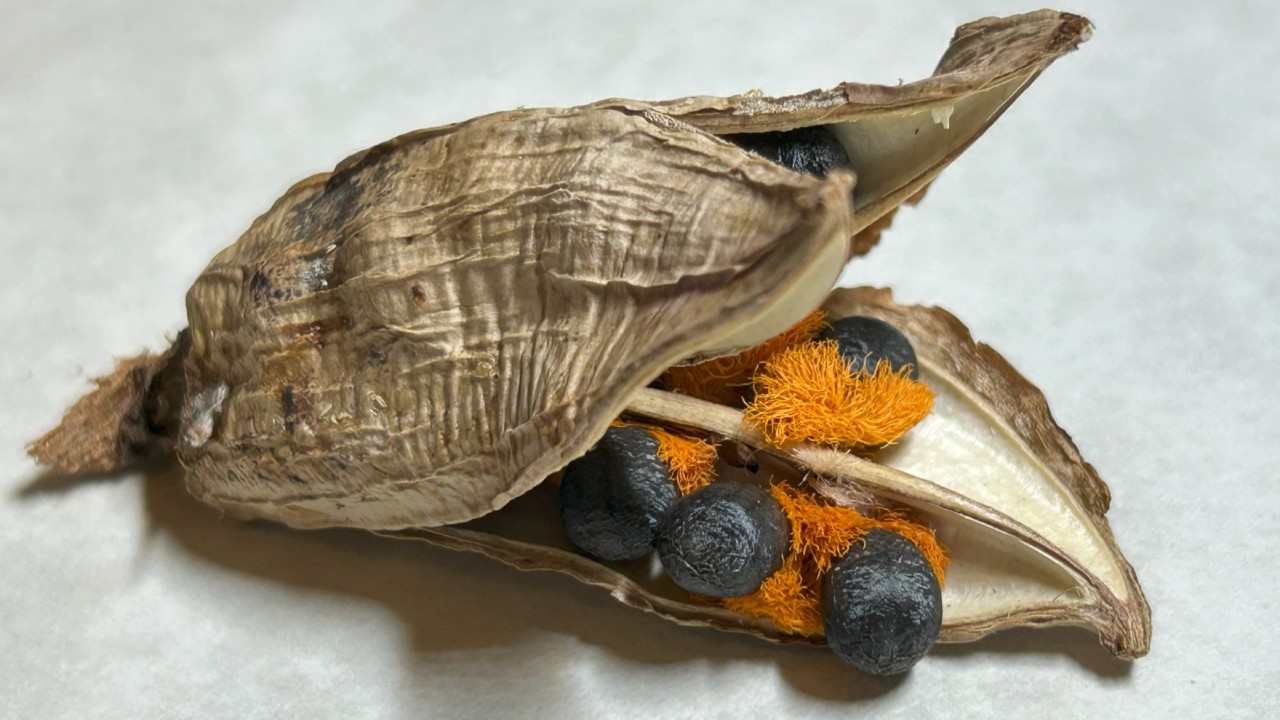 A mature capsule splits open to reveal black seeds covered in bright orange arils.
A mature capsule splits open to reveal black seeds covered in bright orange arils.
As a member of Zingiberales, the bird of paradise shares traits with other tropical families such as bananas (Musaceae), gingers (Zingiberaceae), and heliconias (Heliconiaceae), all of which display large leaves, complex inflorescences, and specialised pollination strategies.
Despite having an irregular blooming season, the bird of paradise still remains a popular choice of houseplant in many homes for its striking leaves and attractive form. Most bird of paradise grown as house plans will never get big enough to flower, so take advantage of your chance to check out our blooming specimens in the South American Garden of Flower Dome soon!
Written by: Sharifah Osman, Senior Manager (Research and Horticulture)
As an avid flora photographer, Sharifah is consistently curious about the natural world that surrounds her. So much so that she eventually pursued a career in horticulture while dabbling in botanical art and photography during her free time.
